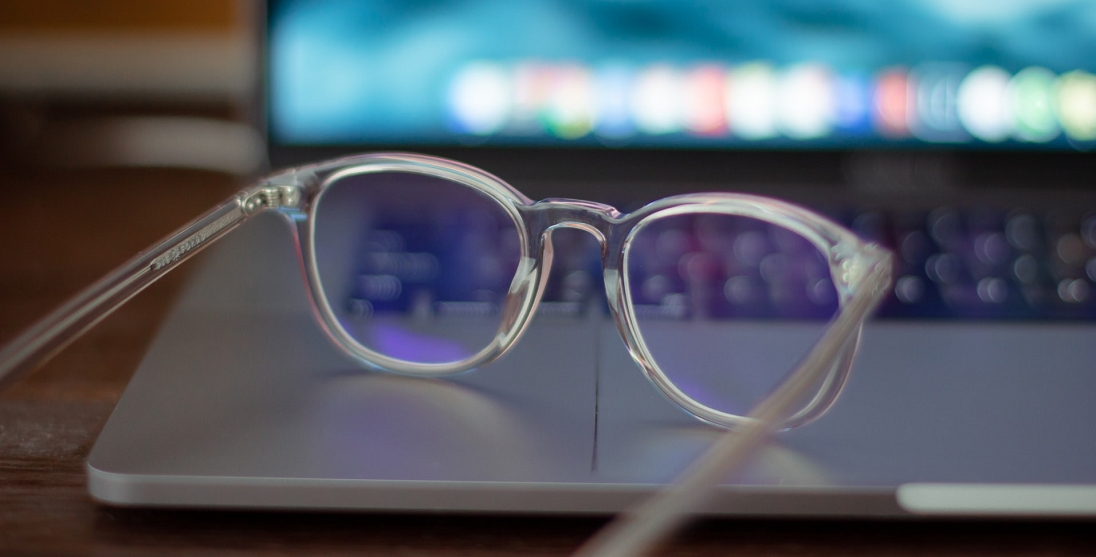
Have you ever felt like your eyes feel dry and tired after a long day of staring at anelectronic device? You’re not alone.
Technology has advanced greatly over the years and nowadays most people are always in contact with some sort of electronic device. Whether it be using their mobile device to search up a service, working on a desktop or laptop all day or watching movies on your phone- technology is used everywhere.
In some cases, people may even experience dry and sore eyes due to overuse of their mobile device. They look for possible solutions to help prevent these types of issues in the future and blue light glasses have been advertised to be a great solution to this problem, but the real question is do blue light glasses really work? We’ve broken it down for you, read along to learn some insights on blue light glasses and blue light filters.
What Is Blue Light?
In short, each wavelength within the spectrum of visible light is representative of a specific color. Red- Light at the lower end of the visible spectrum with a longer wavelength will be seen as red. Green- Light in the middle of thevisible spectrum will be seen as green.
Violet- Light with the shortest waves within the visible spectrum is seen as the color violet. Blue- Finally blue will be seen by the human eye at light waves of 450 to 496 nm.
What Is The Electromagnetic Spectrum?
Now heading into the specifics, electromagnetic spectrum, also known as EMS, can range from gamma rays to radio waves, and these can include X-rays ultraviolet rays, infrared rays and microwave rays which are all considered portions of this spectrum.
Electromagnetic spectrum also contains a small segment that is located in its approximate middle known as the visible light spectrum. These light rays are the only wavelengths that are known to be visible to the human vision. The visible light from these wavelengths is between 400 and 750 nm. This wavelength is relatively short, in comparison a nanometer is 1 billionth of a meter.
Is Blue Light Hazardous To The Human Eye?
Whether you’re spending countless hours looking at screens for work or for personal use, screen time can damage your eyes in the long-run and due to this, people have been looking for any sort of solution to avoid experiencing dry eye or causing potential eye stress. Since the use of additional screen time has gone up excessively in the past few years, our corneas and retinas have been exposed to more than just blue light but have also been affected by all the other wavelengths of visible light. For this reason, our eyes have been exposed to much more light that is composed of various colors due to the additional screen time.
Is Blue Light Bad For Our Eyes?
It’s often asked if blue light is bad for our eyes but in reference blue light is everywhere. To be precise at least 25% of the sunlight we receive on a clear day is considered to be blue light. On the visible spectrum blue light has the shortest wavelength which ultimately means that the shorter the length of an EMS. On that note, there has been no official evidence that blue light itself conveys any special threat to our eye health regardless of if it comesfrom the sun or from our digital screens.
Digital Eye Strains And Symptoms
Digital eye strains can happen to anyone and usually occur from all the staring and squinting you’ve done by looking at your digital screens for long periods of time. This condition also known as “computer vision syndrome” are due to overuse of the eyes. Some constellations of symptoms that you can experience from digital eye strains include eye fatigue, ocular irritation, burning, eye strain, and dry eyes.
The overuse of digital devices over the past few years has escalated the need for industries to market blue-light-blocking glasses or blue light monitor filters to reduce the amount of blue light exposure that you’re consumingduring your interaction with your digital devices.
The American Academy of Ophthalmology Statement On Blue Light Eyeglasses
Blue light eyeglasses have been marketed to be an effective blocking device to relieve and avoid symptoms of digital eye strains. The AAO and the College of Optometrist have cited that there is a lack of scientific evidence that comes with wearing and using blue filtering devices. These organizations have issued a statement that advises against the use of these blue light blocking devices. Instead of acquiring special eyeglasses, they have recommended to pursue a more effective course of eye care and to seek professional help from your ophthalmologist. The advice from these organizations will not only avoid future complications to arise but this willprovide a precise diagnosis in order to rule out any potential eye disease.
Another great habit to follow is the 20-20-20 protocol. This rule helps alleviate eye strains and stress while you’re using your digital devices for longer periods of time. Every 20 minutes you look away from your screen by focusing on something that is at least 20 feet away for 20 seconds. This allows your eyes to rest for an appropriate amount of time which can promote optimal eye health.
Is It True That Blue Light Glasses Help You Sleep Better?
The answer is neither true nor false. Wearing blue light eyeglasses or having blue light filters have not been proven to improve overall eye health but rather have been advertised to be healthier for you. This being said, if you’re looking to implement a healthy habit, it would be to effectively use the 20-20-20 rule while you’re usingyour devices to avoid any eye strains.
While the positive effects of blue light glasses remain to be neutral by most, it’s crucial to implement healthy habits to ensure that eye strains are completely avoided in the future.











